![]()
![]()
![]()
Use LEFT and RIGHT arrow keys to navigate between flashcards;
Use UP and DOWN arrow keys to flip the card;
H to show hint;
A reads text to speech;
48 Cards in this Set
- Front
- Back
- 3rd side (hint)
|
Producers |
Plant and algae photosynthesise Glucose synthesised have bonds which contain light energy and chemical potential energy Glucose formed can be used in respiration to produce water and carbon dioxide and water heat energy OR glucoses can be used to make other molecules eg starch, cellulose, amino acids which are the plants BIOMASS. |
|
|
|
Biomass definition |
Biomass is all the biological molecules made by the plant and are not immediately used for respiration. It represents the growth of the plant. |
|
|
|
How is biomass measured? |
It's a measure of the mass of carbon in the biological molecules Measured as dry mass Can be used to measure the energy value as each molecule making up the biomass strores energy in their bonds.
|
|
|
|
Practical estimation of dry mass |
1. Heat in a low temp oven to evaporate water in the tissues. (No higher than 100°c or else dry mass will burn and energy cannot be calculated) 2. Continue measuring biomass until there is no further change. 3. Calculate biomass in Kgm-2y-1 4. Carbon content estimated as 50% of dry mass. |
|
|
|
Why do we use dry biomass rather than wet biomass? |
Water content of different organisms will vary. Water is not made by the plant In photosynthesis so therefore water is not biomass. |
|
|
|
What are the units for dry mass and the energy value? |
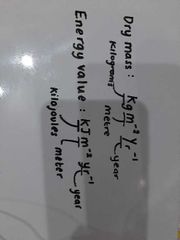
|
|
|
|
What is the explanation of the units for dry mass and energy value? |
So that we can FAIRLY COMPARE biomass produced in different plants in different habitats. Taking in to account: - The size of the area it has come from (m-2/ metre) - the time period (yr-1) growth rates vary with the time of year so take into account the whole year. |
|
|
|
Practical technique for obtaining energy value in dry biomass |
Biological molecules store chemical potential energy. Dried biomass is put in a calorimeter Dry biomass is then combusted Energy released is used to heat water. The change in water temp is used to calculate the energy released. |
|
|
|
Gross primary production : GPP |
The total amount of light energy captured in photosynthesis and stored in molecules as chemical potential energy. |
|
|
|
Respiration (R) definition |
The amount of energy lost from the plant in respiration. This returns to the environment as waste heat. |
|
|
|
Net primary production (NPP) |
This is the remaining amount of chemical potential energy stored in the biomass of the plant. This can be used for growth and reproduction. |
|
|
|
Equation linking GPP, R, NPP |
NPP = GPP - R |
|
|
|
Why is NPP important? |
This is the energy in the new biomass of the plant. Used to make cells, tissues for growth, reproduction. What can energy can be transferred to consumers. |
|
|
|
What happens the the NPP in producers that are consumed by animals? |
Gotten from Ingesting (I) Used in Respiration (R) Lost by Faeces and urine (F) Used in Growth (N) |
|
|
|
Net production equation |
N = I - (F +R) |
|
|
|
Using Sankey diagrams |
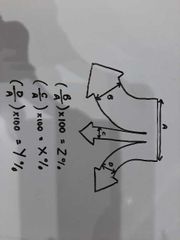
|
|
|
|
Trophic levels |
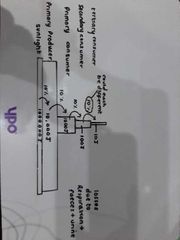
|
|
|
|
Why do trophic levels get narrower as you move up them? |
Energy is lost to decomposers as faeces, urine and uneaten material + energy is lost through respiration by the consumer. |
|
|
|
Efficiency of energy transfer equation |

|
|
|
|
Why are food chains only usually 4 organisms long? |
Energy transfer is decreased between each trophic level and used into making flesh. |
|
|
|
Maximising efficiency in food production |

|
|
|
|
3 key processes of nutrient recycling |
Uptake Feeding Decomposition |
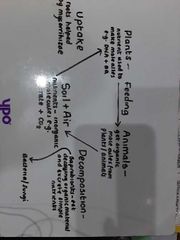
|
|
|
Mycorrhizae |
Fungi that live in close association with plant roots. Final hyphae provide a large surface area for uptake of minerals from soil. In return plants provide carbohydrates. Example of mutualism |
|
|
|
The nitrogen cycle |

|
|
|
|
Nitrogen fixation in the nitrogen cycle |
Plants cannot use N2 because the triple bond is too strong.they rely on nitrogen fixing bacteria to convert N2 to ammonia NH3 which can then be used in making amino acids. |
|
|
|
Where do nitrogen fixing bacteria live? |
Some love in the soil but most live in roots of the plant in root nodules (swelling of the roots) Mutalistic relationship where the bacteria gain carbohydrates They live in communities - most are in the family Fabiaceae most commonly called legumes. They are usually grown to improve soils. So these plants are ploughed into the soil and decomposes and the fixed nitrogen can be used in the next crop |
|
|
|
Ammonification - nitrogen cycle |
Nitrogen containing compounds in dead plants, animals and in faeces are used by saprobiont bacteria in the soil. They digest proteins by secreting enzymes and absorb amino acids. They excrete ammonia and ammonium ions as waste products. |
|
|
|
Denitrification - nitrogen cycle |
Waterlogged soils contain bacteria which use absorb nitrates and convert it in to nitrogen gas which is released back into the atmosphere. This can only happen in conditions without oxygen. |
|
|
|
Soil nitrate concentration |
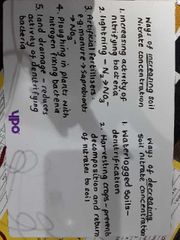
|
BLAPD WHO? |
|
|
Phosphate cycle |

|
|
|
|
Natural Vs agricultural cycles |

In both minerals are taken up from soil by plants ms used to make biological molecules such as proteins and DNA. However in in natural cycles bacteria and fungi decompose the plants and bio molecules and the cycle starts again. Where as in artificial cycles the plants are harvested meaning no decomposition so a fertiliser is added instead. |
|
|
|
2 types of fertilisers |
Artificial : inorganic chemicals such as ammonium nitrate and these come in powders or pellets . They are water soluble Natural: manure or compost they slowly decompose to release minerals. |
|
|
|
Leaching |
When artificial fertilisers are easily washed off due to their solubility. Eventually these end up in water ways causing eutrophication |
|
|
|
Eutrophication |
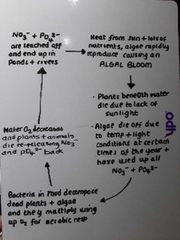
|
|
|
|
Succession |
The way an ecosystem changes over time. Different communities of plants will replace each other in a predictable way making changes to the habitiat,along it less hostile for the next community of plants. |
|
|
|
Sere |
A plant community |
|
|
|
Climax community |
The final community . Usually a forest. The climax community is usually stable, resilient to change, and long lasting. |
|
|
|
Stages in succession |
Pioneer community Moss sere Herbaceous sere Shrub sere Tree sere Climax community |
6 |
|
|
Initial conditions before the pioneer community |
No soil, few available minerals, high light intensity, extremes of temperature, windy |
5 |
|
|
Pioneer community |
On bare rock lichens are the pioneers. - when they die they decompose into organic matter called humus. Creating thin soil being able to retain moisture and slowly release nutrients through decomposition. On sand dunes marram grass is the pioneer species. |
|
|
|
Moss sere |
Misses and grass germinate and grow using moisture held by the thin soil. The decompose adding to soil layer. |
|
|
|
Herbaceous sere |
In the less hostile conditions, plants requiring more water can now germinate and grow. These include herbaceous plants such as ferns and grasses. They germinate rapidly due to wind dispersed seeds. They will out compete mosses for light and space. The plants grow taller and they will reduce wind speed and light intensity at soil level helping retain soil moisture and seeds to germinate |
|
|
|
Shrub sere |
Sub-climax community Soil is deeper, More humus, and pH is closer to neutral. Water availability, light intensity, and wind speed improved. Larger shrubs can grow eg bramble and hawthorn.they grow fast and outcompete the lower level herbaceous species for light and space. |
|
|
|
Tree sere |
Woody trees. Climax community Final community provides a diverse set of niches to support complex food webs and trophic level interactions. |
|
|
|
Moving from one sere to another |
Each sere makes the environment less hostile Each community out competes the one before Each sere becomes more diverse More niches |
|
|
|
Secondary succession |
When a climax community is removed by humans or destroyed the pioneers will re-establish and succession starts again. Secondary succession is usually much quicker as there is already well developed soil. |
|
|
|
Plagioclimax |
Humans stopping natural succession is called plagioclimax. Usually humans use animals to stop succession. The animals will graze of plants preventing succession |
|
|
|
Conservation methods |
Managing succession - mass farming and grazing livestock presents succession. Limits on the number of animals and farmers is managed. Seed banks - endangered species seeds are kept. Captive breeding - breeding of endangered species Protected areas - national parks and conservation's areas Fishing quotas - limits are placed on sizes and number of fish caught |
|

